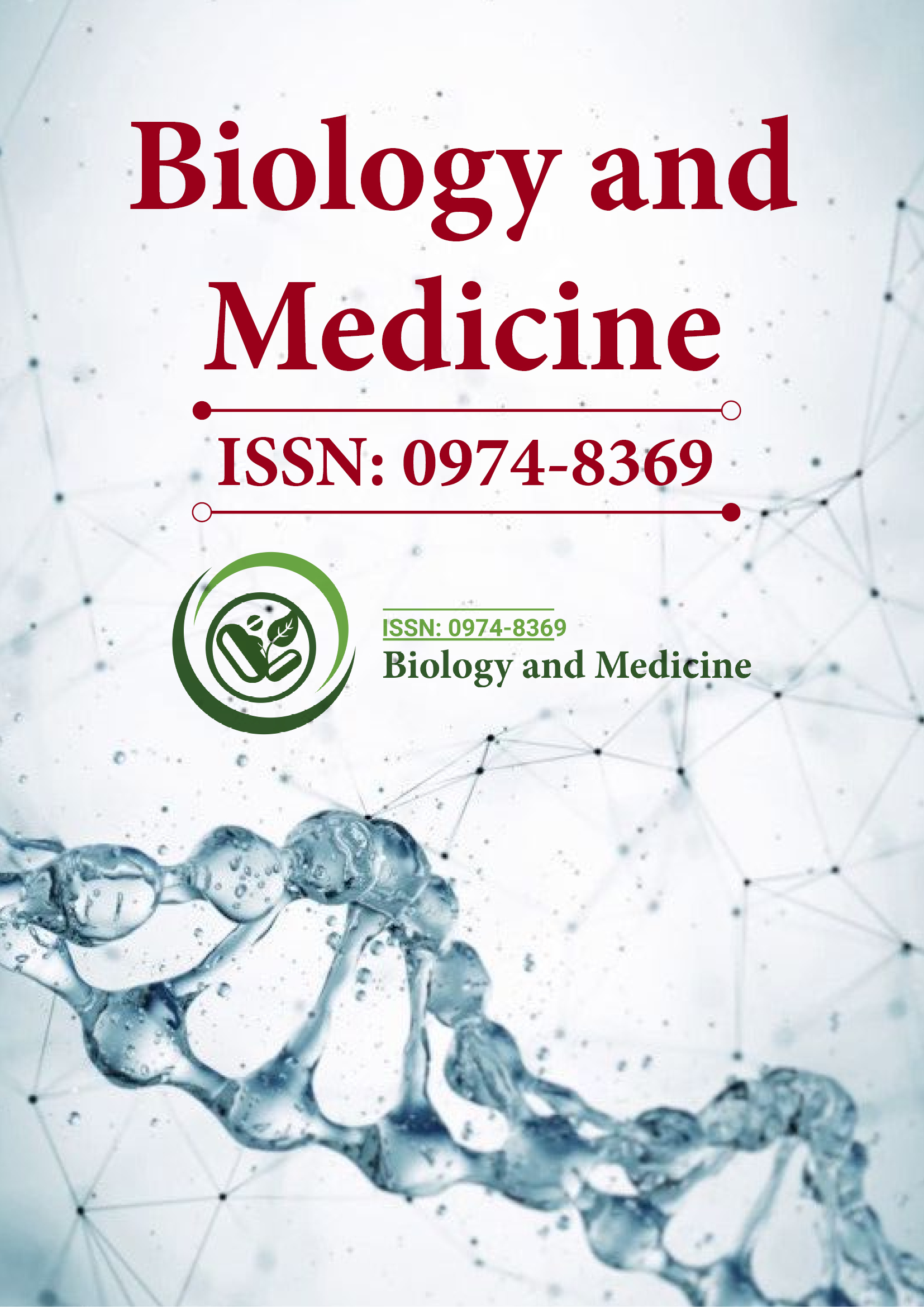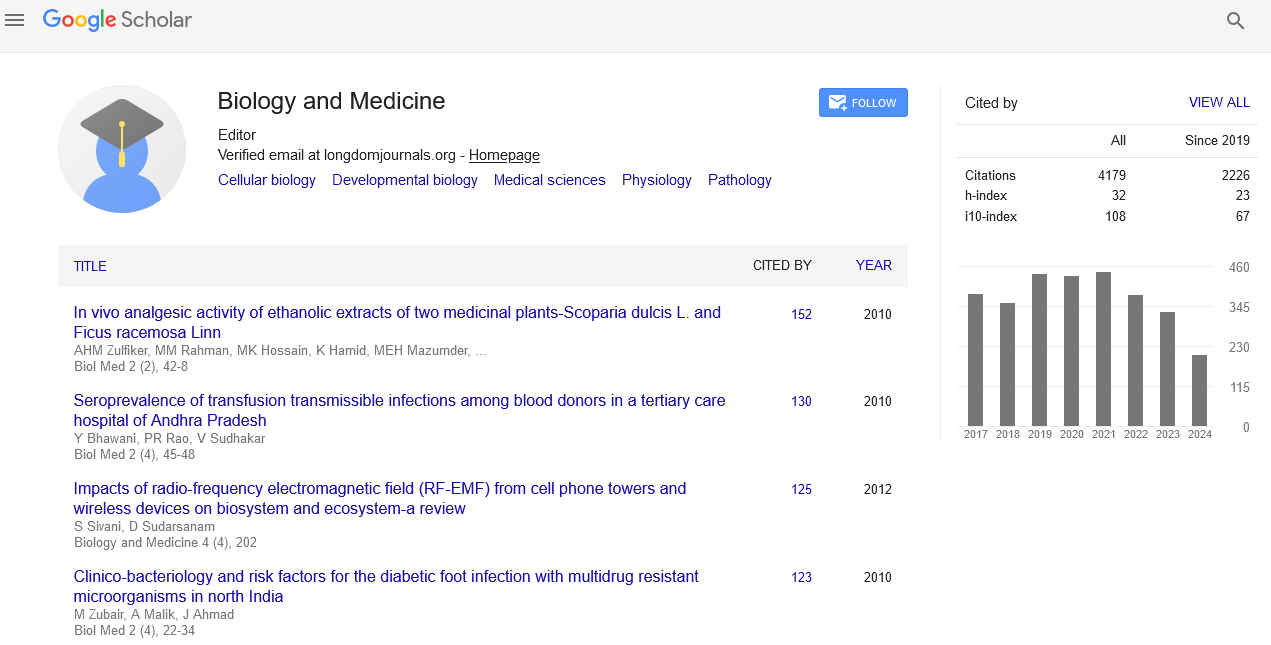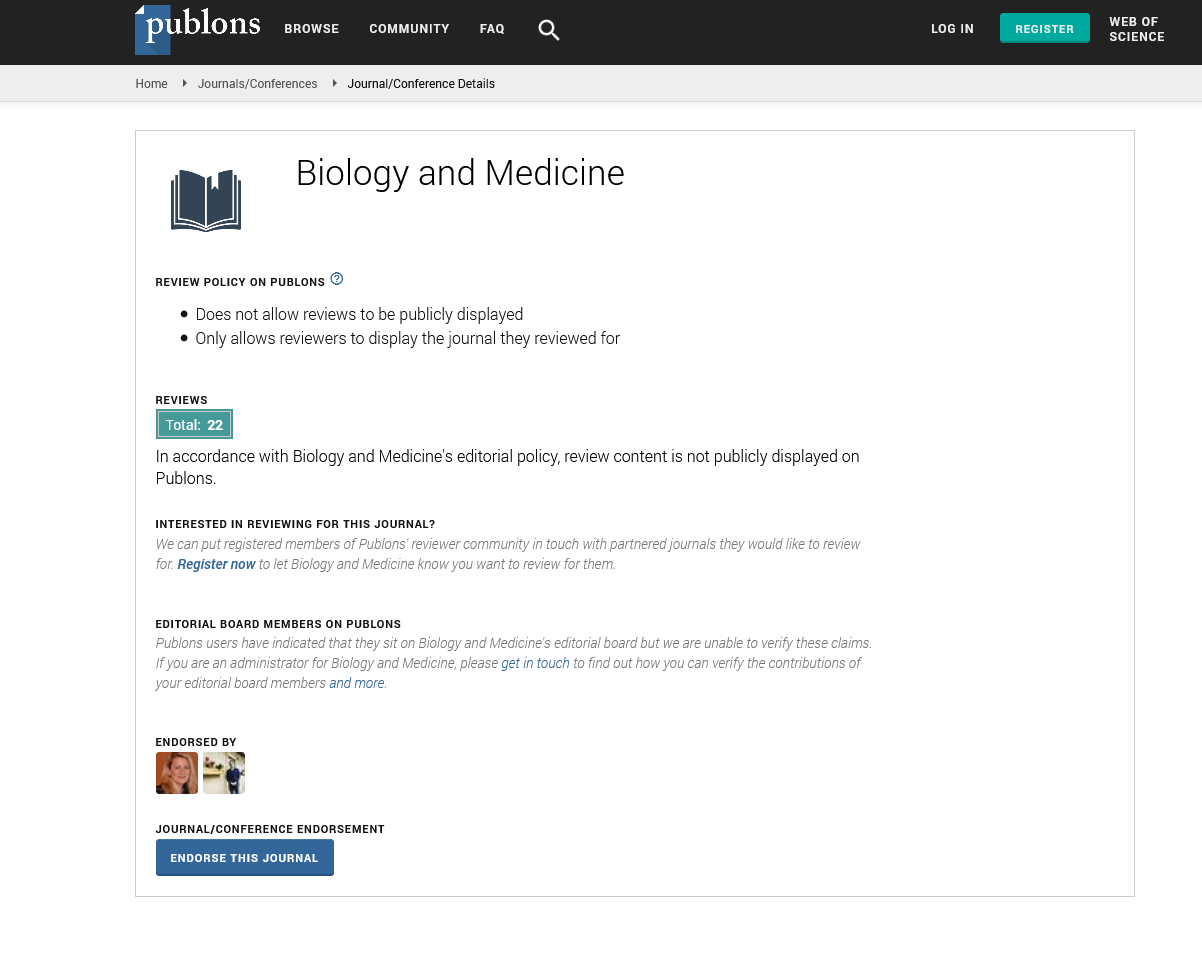Indexed In
- Open J Gate
- Genamics JournalSeek
- CiteFactor
- Cosmos IF
- Scimago
- Ulrich's Periodicals Directory
- Electronic Journals Library
- RefSeek
- Hamdard University
- EBSCO A-Z
- Directory of Abstract Indexing for Journals
- OCLC- WorldCat
- Proquest Summons
- Scholarsteer
- ROAD
- Virtual Library of Biology (vifabio)
- Publons
- Geneva Foundation for Medical Education and Research
- Google Scholar
Useful Links
Share This Page
Journal Flyer

Open Access Journals
- Agri and Aquaculture
- Biochemistry
- Bioinformatics & Systems Biology
- Business & Management
- Chemistry
- Clinical Sciences
- Engineering
- Food & Nutrition
- General Science
- Genetics & Molecular Biology
- Immunology & Microbiology
- Medical Sciences
- Neuroscience & Psychology
- Nursing & Health Care
- Pharmaceutical Sciences
Perspective - (2024) Volume 16, Issue 12
Fungal Contaminants and Mycotoxins: Impacts on Human and Animal Health
Mathew Francisco*Received: 19-Nov-2024, Manuscript No. BLM-24-27854; Editor assigned: 21-Nov-2024, Pre QC No. BLM-24-27854 (PQ); Reviewed: 06-Dec-2024, QC No. BLM-24-27854; Revised: 13-Dec-2024, Manuscript No. BLM-24-27854 (R); Published: 20-Dec-2024, DOI: 10.35248/0974-8369.24.16.755
Description
Fungal contaminants and mycotoxins are significant public health concerns due to their potential to affect both human and animal health. Mycotoxins are toxic secondary metabolites produced by certain species of fungi that grow on crops and food products under favorable environmental conditions. These toxins can contaminate a wide range of agricultural commodities, such as cereals, nuts, fruits, spices and are responsible for foodborne diseases. The impacts of mycotoxins on human and animal health can be severe, including chronic diseases, immune system suppression and even death in extreme cases. Fungal contaminants are fungi that grow on food and crops, often under conditions of high moisture, warmth and poor storage. Several species of fungi, particularly Aspergillus, Fusarium and Penicillium are known to produce mycotoxins. These toxic substances are the byproducts of fungal metabolism and can be harmful even at low concentrations. The contamination of food and feed with mycotoxins can occur at various stages of production, from the field to storage and transportation.
Humans and animals are primarily exposed to mycotoxins through the consumption of contaminated food or feed. In humans, this can happen through the intake of cereals, nuts, grains and other products contaminated by fungi. In animals, mycotoxins can be ingested via contaminated feed, which can then lead to the transfer of toxins into the food chain. This is particularly concerning in livestock farming, where contaminated feed can affect the health of farm animals, which may then be consumed by humans. In addition to direct consumption, mycotoxins can also enter the environment through the air, particularly in poorly ventilated storage areas where fungal contamination is prevalent. Inhalation of airborne spores or mycotoxins can contribute to respiratory problems, particularly in the health effects of mycotoxins on humans are diverse and range from acute poisoning to chronic diseases. from acute poisoning to chronic diseases. Aflatoxins are particularly concerning because of their strong carcinogenic properties. Chronic exposure to aflatoxins, even at low levels has been linked to an increased risk of liver cancer. In developing countries, where food safety regulations may be less stringent, exposure to aflatoxins in staple foods like maize and peanuts is a serious issue. Other mycotoxins such as ochratoxin A have nephrotoxic effects, leading to kidney damage and kidney failure in severe cases. Prolonged exposure to ochratoxin A can also result in immunosuppression, making individuals more susceptible to infections and other diseases.
Additionally, mycotoxins can cause acute symptoms such as nausea, vomiting, abdominal pain and diarrhea, leading to foodborne illnesses. In high doses, mycotoxins can cause death, though fatalities are rare. The broader public health concern lies in the long-term, low-level exposure to mycotoxins, which can contribute to a range of chronic health issues, including immune system suppression, endocrine disruption and developmental toxicity. Mycotoxins are also having a significant concern for vulnerable populations including pregnant women, children and individuals with compromised immune systems.
Mycotoxins cause health risks to animals, particularly livestock and poultry. Animals that consume contaminated feed can suffer from a variety of health problems, which can affect growth rates, reproductive health and overall productivity. For example, aflatoxins can cause liver damage in animals, leading to reduced milk production, growth retardation and even death in severe cases. In poultry, aflatoxin contamination can result in poor feed conversion, immune system suppression and an increased susceptibility to diseases. The contamination of animal products with mycotoxins also raises concerns for human health. For example, mycotoxins can be transmitted to meat, milk and eggs from contaminated animals, creating an indirect exposure pathway for humans.
Citation: Francisco M (2024). Fungal Contaminants and Mycotoxins: Impacts on Human and Animal Health. Bio Med. 16:755.
Copyright: © 2024 Francisco M. This is an open-access article distributed under the terms of the Creative Commons Attribution License, which permits unrestricted use, distribution, and reproduction in any medium, provided the original author and source are credited.


